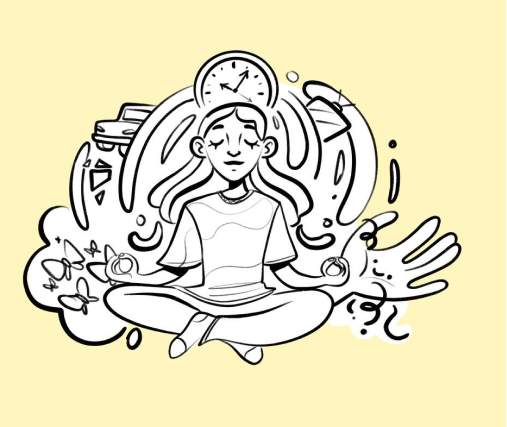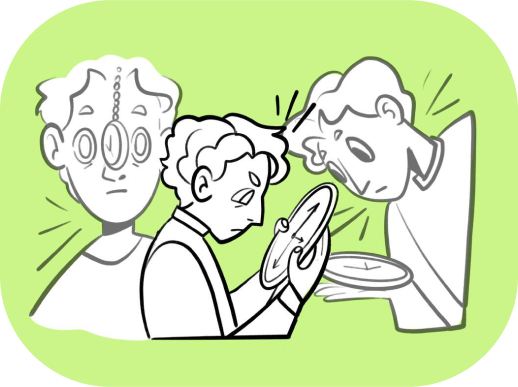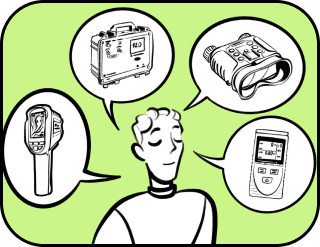How to control time so that it doesn't control you
‘I remember how the warm sun caught me in its arms in the cozy suburbs of Tuscany. I remember how the wine flowed from the best vineyards, how the cicadas fluttered… and I remember how she smiled at me so crazy, over and over again… Why didn’t you stop that day for me?’
That is what the hero of the film Groundhog Day said, stuck in one fixated moment against his will.
And, indeed, it would be great to at least sometimes stop time so that a tiny but important moment lasts forever. In the same way, it would be great sometimes to be able to press the secret button that controls the hands of the clock and order: ‘Save.’
And how much you sometimes want to go back to the past to correct some annoying mistake, or how much you sometimes want to take power, if not over the world, but at least over the ill-fated alarm clock!
Scientists, in an attempt to find technology that stops time, have taken fundamentally different paths. For those who don’t want to spoil the holidays with physics, scientists have proposed a usual-life solution. For fans of demonically complex but effective conclusions, scientists have proposed an IT solution. It is up to you which of these solutions to read first.
Sit comfortably. If you are already sitting, check if you are comfortable. Look around, listen. The hum of cars, the sound of breaking glass, the noise of the TV. The clicks of a keyboard, the rustle of rain from an open window, the sound of a neighbor’s lawn mower. The microwave informed you that the dish you placed in it is ready. In an office somewhere far from you, the boss is shouting at the courier, one of the colleagues is knocking on the cooler, which refuses to give out cups for water. Time is running.
Now look at your palm. ‘Hey, Girl, what did you do today? How many people did you say hello to today? How many sheets of printing ink did you move from place to place?’ Slowly walk your eyes along all the lines on the palm, noting all the curls and weaves. Curves, lines, veins, let nothing escape your attention. From the bottom to the top, then from the top to the bottom.
Now look ahead. What’s in front of your eyes? A meaningful photo? Smile at it. Describe it. Try to mentally paint it with other colors.
If you see a picture with many different objects, count them and list their characteristics. If you see a string of neon signs, read them backwards. If there is a stranger in front of you, come up with their name, occupation and a short story that could happen to them.
Can you feel it? Time has stopped

In order to stop time, you just need to learn to look at it correctly. That is exactly what the ancient Greek philosopher Zeno of Elea argued two and a half thousand years ago and gave exhaustive arguments.
If you shoot an arrow from a bow, it will start moving not along a single trajectory up and down, it will move in tiny segments. If you look at the arrow in any of these segments, without knowing where the arrow will fly, it turns out that the arrow is motionless. In the same way, if you have an ordinary piece of paper in front of you, time has stopped for you and for it. If a random gust of wind lifts the piece of paper and carries it in an unknown direction, you, with your observation, will be able to stop the passage of time: now the piece of paper has stopped at a point above the table, now it has moved lower and stopped, now it has shifted to the side by 50 degrees and also stopped, now it has frozen, laying down on the table.
By the way, researchers studying atomic energy did Zeno’s experiment with the Sodium atom and simultaneously increased and decreased the chances of its decay by observing – the more often they looked at the atom, the more likely it was to decay. After that the researchers came to the conclusion that if they correctly adjust the frequency of measurements, they can make a system of atoms decay faster or slower. And subsequently, you can learn to stop not only time, but the whole world.
Other scientists from the University of Bristol recommend making a mess to make time move in both directions at the same time.
The authors of this study conducted an experiment with a set of particles entangled at the quantum level. They created special conditions under which the particles could do whatever they wanted. To enhance the experiment, the scientists assigned some particles to perform the function of a ‘refrigerator’: they received excess heat from interaction with other particles. And this is what it all led to: the more chaos grew, the faster time fled. When the particles behaved more steadily, time was reversed, and refrigerators turned into ‘heaters.’
Scientists from Dartmouth College, St. Anselm College and Santa Clara University recommend stopping time exclusively by simultaneously pressing the brake and gas pedals.
They recommend this method because that is how they managed to slow down the time of a highly accurate atomic clock. An atomic clock is a device that measures time, where natural oscillations associated with processes occurring at the level of atoms or molecules are used as a periodic process. It turned out that if you combine the force of gravity and the properties of entangled particles, both the ‘gas’ and the ‘brake’ will work simultaneously in the clock, and time is guaranteed to stop.
Another way to stop time was proposed by the scientist in the field of theoretical physics Carlo Rovelli. He recommends treating the concept of time as an illusion. Since there is no such concept as ‘time’ in quantum physics, then there is essentially nothing to stop.
‘In the elementary grammar of the world there are neither spatial nor temporal processes – only processes that transform physical quantities from one to another, thanks to which possibilities and relationships can be calculated,’ the scientist writes.
Rovelli argues that the world seems ordered, flowing from past to present, only because of our point of view. We impose order on it by ourselves, recording events in a specific linear series. We connect events with results by ourselves, and this gives us a sense of time. However, time passes faster at the top of the mountain than at sea level. Minutes in quantum physics class drag on forever, but hours spent at a party fly by. Out of all that, the scientist proposes to conclude that there is no single concept of time, there is only the desire of people to bring the chaos of the Universe to order. ‘Time is ignorance,’ he says.
We will continue to observe the experiments of scientists searching for technologies for time control. In the meantime, look at your watch. It’s exactly 15:55, isn’t it? It hasn’t seemed to you. Or it has. Or we don’t know it anymore.
Perhaps that’s enough technology for today.

Is there life on Mars, or is there no life on Mars? Join the eternal debate on paradoxes!
Thank you!




